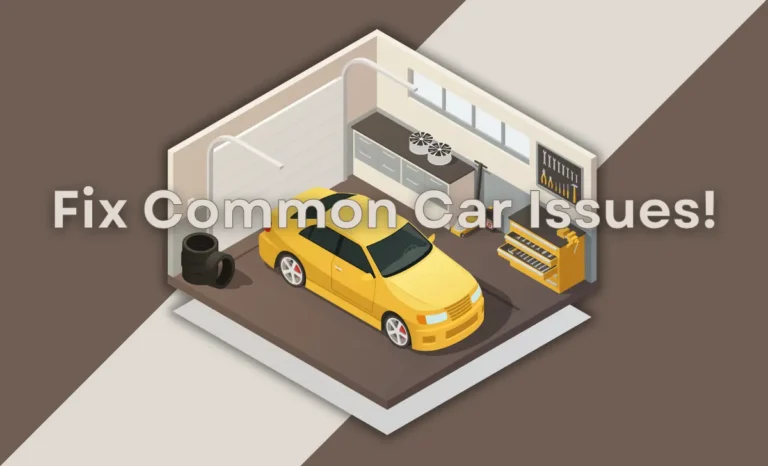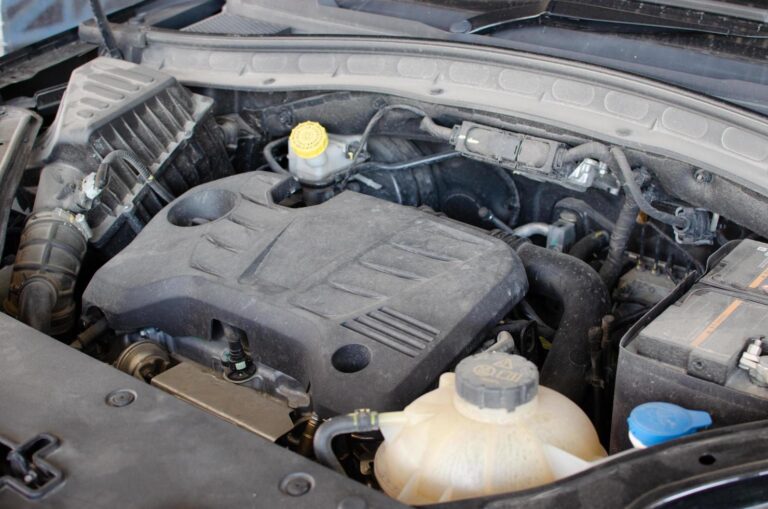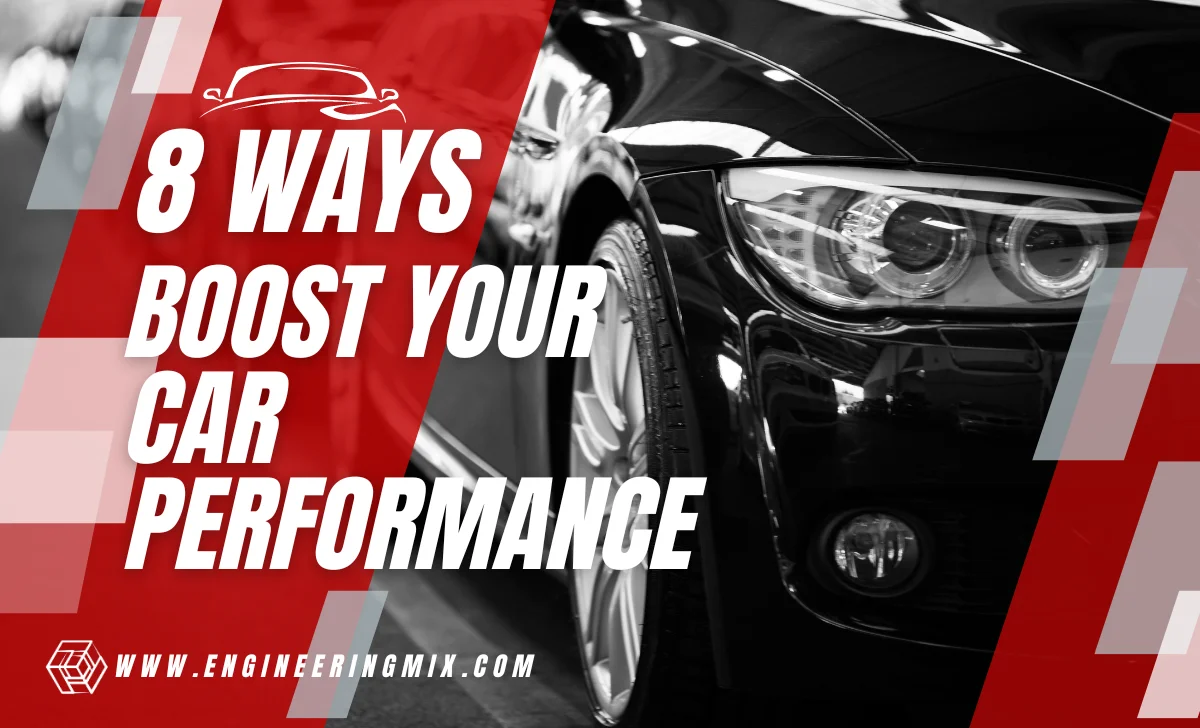
How can Improve my car performance in 8 ways?
Welcome to our in-depth guide to boosting car performance. Whether you’re a die-hard automotive enthusiast or simply want to improve the capabilities of your vehicle, this article will give you helpful insights and effective advice. We recognize the value of providing distinctive and simple reading content, so we’ve designed this guide to appeal to both automotive professionals and casual visitors. So, let’s get started and explore the realm of automotive performance optimization in a way that is instructive, fascinating, and understandable to all readers.
Let’s Go…….!
In this article
#1 Engine Tuning – Unleashing the Power Within
The engine is the heart and soul of any vehicle, and maximizing its potential can significantly improve vehicle performance. In this section, we’ll go into engine tuning, looking at several ways for extracting more power, improving efficiency, and elevating your driving experience. This guide will give you unique insights and easy-to-understand knowledge, whether you’re a seasoned car enthusiast or fresh to the world of engine optimization. Let’s go on a journey to improve your car’s performance through engine tuning.
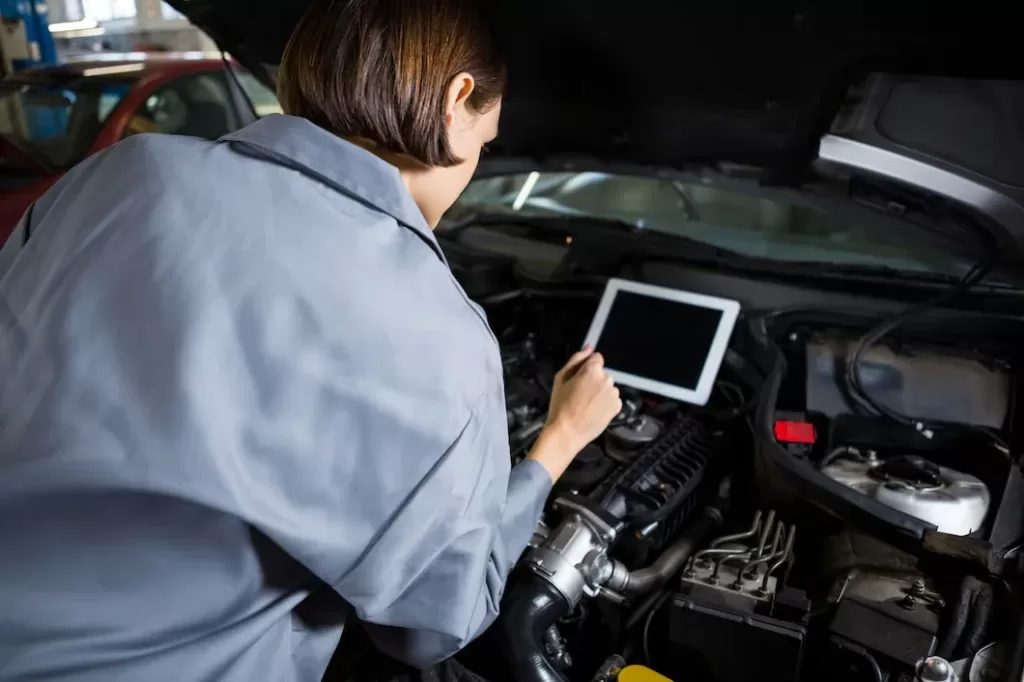
Unleashing the Hidden Power of ECU Remapping
The Electronic Control Unit (ECU) is the engine’s brain, controlling a variety of parameters that affect performance. ECU car remap, also known as chip tuning or engine tuning, is the process of resetting the ECU to optimize characteristics such as fuel injection time, air-to-fuel ratio, ignition timing, and others. This technique unlocks your engine’s hidden potential, resulting in enhanced power output and improved throttle response. However, it’s critical to work with a competent tuner that understands your vehicle’s individual needs and guarantees safe and dependable performance boosts.
Cold Air Intake: Giving Performance a Fresh Start on Life
The air intake system is critical to providing air to the engine for combustion. Upgrading to a cold air intake system can significantly improve performance. The stock airbox and filter are replaced by a custom-developed system that draws cooler air from outside the engine bay. Cooler air is denser, which results in better combustion and more horsepower. Furthermore, cold air intakes frequently have smoother airflow channels, which reduce limitations and improve throttle response. However, to assure compatibility and the best performance improvements, use a cold air intake that is particularly developed for your automobile type.
Upgraded Exhaust System: Improved Flow and Sound
The exhaust system not only removes exhaust gases but also has an impact on engine performance and the whole driving experience. Upgrading to a high-performance exhaust system can help the engine realize its full potential. Wider pipes, performance mufflers, and optimized headers are common features of high-flow aftermarket exhaust systems, which reduce exhaust constraints and improve engine efficiency. This results in more power, better throttle response, and a more aggressive exhaust tone. To achieve compliance, it is critical to consider local legislation and noise restrictions while selecting an exhaust system.
Engine tuning is the key to unlocking your vehicle’s secret power and performance capabilities. You can improve horsepower, throttle response, and overall driving experience by using techniques like ECU remapping, cold air intakes, and modified exhaust systems. Remember to speak with industry experts to guarantee appropriate installation, compatibility, and compliance with local requirements. Stay tuned for future sections in which we’ll look at other ways to improve your car’s performance, including suspension upgrades, brake upgrades, aerodynamics, and weight reduction. Prepare to transform your vehicle into a high-performance machine capable of providing thrilling drives on every voyage.
Also, Read:
Top 10 Safest Cars in India
#2 Suspension and Handling – Enhancing Your Driving Experience
Optimizing suspension and handling characteristics is critical for boosting car performance. A well-tuned suspension system can drastically improve your driving experience by improving control, stability, and responsiveness. In this section, we’ll look at different ways to improve your vehicle’s suspension and handling while still maintaining readability for all visitors.
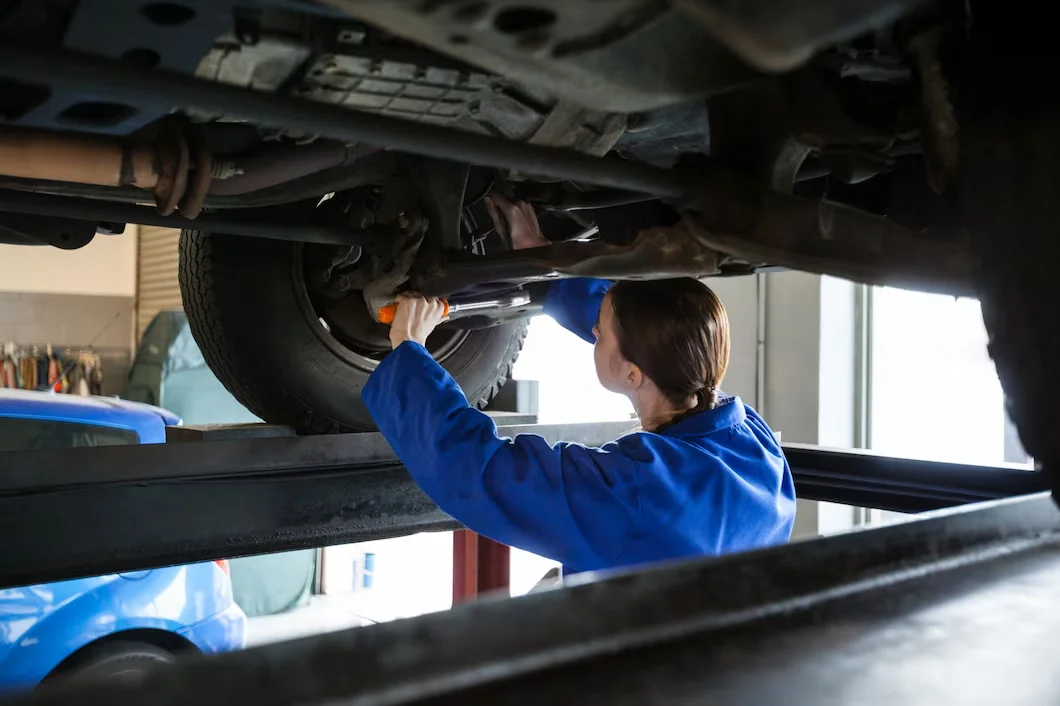
Suspension Performance Components:
Upgrading essential suspension components can improve your car’s handling dramatically. Consider the following alternatives.
Springs – The stock springs are replaced with firmer, performance-oriented springs, which lower body roll and enhance cornering stability. It also aids in maintaining tire contact with the road, which improves traction.
Shock absorbers and struts – High-quality shock absorbers and struts with increased damping control give a more comfortable ride and precise handling. Adjustable choices allow you to fine-tune your driving tastes.
Sway Bars – Sway bars (also known as anti-roll bars) are upgraded to reduce body roll during cornering, promote balanced weight distribution, and improve overall stability.
Kits for lowering:
Lowering your car’s ride height not only improves its cosmetic appeal but also improves its performance. Take a look at the following.
Spring Reduction – These specifically engineered springs shorten the distance between the body of your vehicle and the road, decreasing the center of gravity. This adjustment enhances stability and reduces body roll during high-speed maneuvers.
Coilovers – Coilover suspension systems allow you to change the ride height, dampening, and rebound. They let you fine-tune the suspension of your vehicle based on your preferences and driving conditions.
Tyres for Performance:
Choosing the proper tyres can have a significant impact on your vehicle’s handling and overall performance. Consider the following factors.
Compound for Tyres – For enhanced traction and cornering ability, use high-performance tyres with a grippier compound. Softer rubber compounds provide more grip but may wear out more quickly.
Tread Design – Consider tyres with an aggressive tread design that effectively evacuates water while improving traction. However, keep in mind that some high-performance tyres may have a shorter tread life.
Tyre Dimensions – Plus-sizing your wheels while keeping the tyre sidewall height acceptable improves steering responsiveness and cornering stability. However, make certain that the overall tyre diameter does not exceed the manufacturer’s specified limitations.
Alignment of the Wheels:
Wheel alignment is critical for improving handling and reducing tyre wear. Take a look at the following alignment options.
Camber – The vertical tilt of the wheels is determined by adjusting the camber angle. Although negative camber can improve the cornering grip, it can also increase tyre wear. It’s critical to find the right balance for your driving demands.
Toe – The angle at which the tyres point inward or outward when viewed from above is referred to as toe alignment. Straight-line stability and even tyre wear are ensured by proper toe settings.
Caster – The caster angle has an impact on steering feel and stability. A good caster angle increases straight-line stability and self-centering, making for a more enjoyable driving experience.
Braking System Upgrade:
Improving the control of your vehicle is incomplete without addressing the braking system. Consider the following enhancements.
Rotors and brake pads – Upgrading to high-performance brake pads and slotted or drilled rotors increases braking performance by increasing stopping power, decreasing brake fade, and improving overall braking performance.
Lines of Braking – When stock rubber brake lines are replaced with stainless steel braided lines, expansion is reduced, resulting in more quick and more consistent brake pedal action.
Braking fluid – Using high-performance brake fluid with a higher boiling point avoids brake fade and ensures consistent braking performance under hard driving circumstances.
Improving your vehicle’s suspension and handling qualities is an important step toward realizing its full performance potential. You may improve your driving experience by changing suspension components, optimizing tyre choices and wheel alignment, and boosting the braking system. Remember to achieve a balance between comfort and convenience.
#3 Brake System – Unleashing Stopping Power and Performance
When it comes to car performance, the brake system should never be disregarded. While acceleration and speed get the most attention, the ability to stop quickly and successfully is just as important for both safety and overall driving enjoyment. In this section, we’ll go into the subject of brake system optimization, looking at several methods for improving braking performance. This book will give you vital insights to increase your understanding of brakes and how to maximize their potential, whether you’re a seasoned automotive expert or a casual visitor looking for readable content.
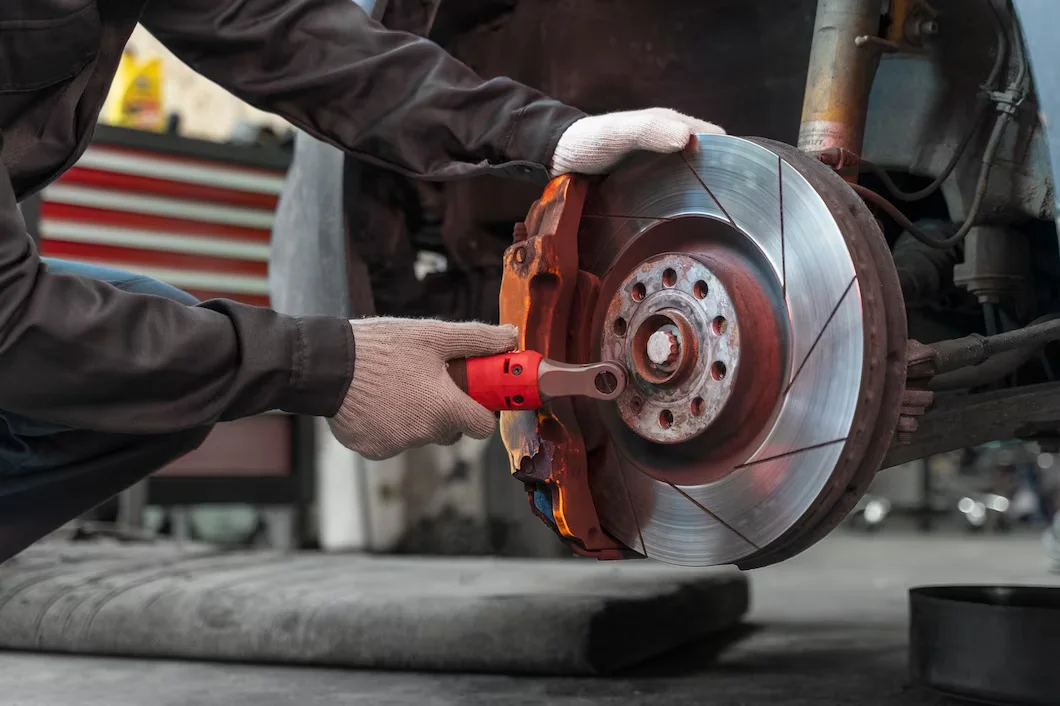
Brake Pads and Rotors Upgraded
Brake pads and rotors are essential for stopping power and performance. Upgrading to high-performance brake pads can improve braking effectiveness while also shortening stopping distances and improving pedal feel. Choose pads composed of high-quality materials that provide great friction and fade resistance. Consider adding performance rotors that are engineered to effectively disperse heat, lowering the chance of brake fades during severe driving situations.
Upgraded brake fluid
Brake fluid is sometimes disregarded, but it is critical to the operation of the braking system. Upgrading to high-performance brake fluid with a higher boiling point can increase overall system performance. Performance brake fluids are engineered to tolerate greater temperatures, lowering the possibility of fluid boiling, which can result in a spongy brake pedal feel and reduced braking power. Flushing and refilling brake fluid on a regular basis is also necessary to ensure peak performance.
Brake Calliper Care
braking caliper maintenance is critical for optimal braking performance. Check that the calipers are clean, clear of debris, and working properly. Lubricate caliper slide pins and examine seals on a regular basis to avoid leaks or sticking. Caliper maintenance guarantees level and consistent brake pad pressure, maximizing braking efficiency and lowering the chance of uneven pad wear.
Brake Lines for High Performance
Brake feel and responsiveness can be improved by upgrading to stainless steel braided brake lines. These lines are more resistant to pressure expansion than regular rubber lines, resulting in a harder pedal sensation and enhanced brake modulation. Furthermore, stainless steel lines are more durable and corrosion-resistant, extending their lifespan and ensuring consistent performance.
Brake Cooling
Excessive heat can compromise brake performance; thus, brake cooling is critical, especially during intense driving or track sessions. There are various methods for improving brake cooling, including:
Ducts for Brakes – By installing brake ducts, cold air is sent toward the brake rotors, efficiently dispersing heat and preventing brake fade.
Kits for Brake Cooling – Consider aftermarket brake cooling kits, which contain specialized ducting, deflectors, and air guides to improve airflow and brake cooling.
Brake Discs with Ventilation – Upgrading to vented or slotted brake discs improves heat dissipation, lowering the danger of brake fade and overall brake performance.
A well-maintained and optimized braking system is critical for both safety and performance driving. You can greatly improve your vehicle’s braking capabilities by updating brake pads and rotors, enhancing brake fluid, maintaining brake calipers, evaluating performance brake lines, and applying brake cooling measures. Whether you’re negotiating daily traffic or testing the limits on a track, a properly optimized braking system will provide you with the confidence and control you need to fully enjoy your driving experience. Always prioritize safety, seek professional advice if necessary, and ensure appropriate installation and maintenance of any brake system modifications.
Also, Read:
Top 10 Best 7-Seater Cars in India
#4 Aerodynamic Enhancements – Unlocking Efficiency and Stability
Aerodynamics is often disregarded when it comes to boosting vehicle performance. Improving the airflow around and beneath your vehicle can improve both efficiency and stability. In this section, we’ll dig into the world of aerodynamic upgrades, discussing their significance and offering practical advice for achieving the best outcomes. Understanding and adopting these tactics can unlock the actual potential of your car, whether you’re a racing enthusiast or an everyday commuter.

Front Spoiler/Splitter
The installation of a front spoiler or splitter is a popular way to improve aerodynamics. These components, which are located beneath the front bumper, work by redirecting airflow around the sides of the car. This decreases drag and increases efficiency while also producing more downforce. Downforce increases stability, especially at high speeds and during violent maneuvers. It is critical to choose a spoiler or splitter that is particularly developed for the make and model of your vehicle to ensure optimal installation and functionality.
Rear Wing/Spoiler
A rear wing or spoiler, like the front spoiler, is essential for boosting aerodynamic performance. These components, which are mounted on the trunk or rear of the vehicle, aid in the management of airflow across the vehicle’s rear end. They improve traction and stability by boosting downforce and decreasing lift, especially when accelerating and navigating curves. Again, it is critical to select a wing or spoiler that is appropriate for your car’s individual design and intended purpose.
Skirts on the sides
Side skirts are aerodynamic modifications that extend along the vehicle’s sides, between the front and rear wheel arches. They aim to reduce turbulence and drag by smoothing the airflow along the sidewalls. Side skirts improve the overall aerodynamic efficiency of the car by reducing wheel disturbance and creating a cleaner flow. They also add to the visual attractiveness of your vehicle, giving it a sleek and athletic aspect.
Diffusers
A rear diffuser is an aerodynamic component that is situated beneath the rear bumper. Its principal function is to control the airflow exiting from beneath the vehicle, so creating a low-pressure area and minimizing drag. Diffusers contribute to stability by optimizing airflow and reducing the creation of turbulent air pockets. This is especially useful at high speeds, where keeping balance and control is critical. As with other aerodynamic upgrades, selecting a diffuser developed particularly for your car’s make and model is critical.
Smoothing Surfaces and Removing Obstacles
Another key part of aerodynamics is keeping surfaces smooth and removing obstructions that hinder airflow. Make sure your car’s body panels are in good shape, with no dents or defects that could produce drag. Additionally, when not in use, remove any unneeded attachments such as roof racks or spoilers to reduce air resistance. Maintaining ideal aerodynamic efficiency also includes keeping your car clean and clear of dirt and debris.
Aerodynamic improvements are critical to enhancing vehicle performance, efficiency, and stability. You can optimize the airflow surrounding your vehicle by investing in components such as front spoilers, rear wings, side skirts, and diffusers, which lower drag and produce vital downforce. Maintaining smooth surfaces and removing barriers also contribute to overall aerodynamic efficiency. Whether you want better fuel economy or better handling and stability, adopting these aerodynamic upgrades will unlock your car’s actual potential. Remember to use components made specifically for your car to reap the benefits of a sleek, efficient, and high-performing machine.
#5 Weight Reduction – Unleashing Performance Potential
In the goal of improving automotive performance, it is common to overlook the impact of weight. A vehicle’s weight has a considerable impact on its acceleration, handling, and fuel efficiency. By decreasing weight, you may unlock the actual potential of your vehicle and enjoy improved performance on the road. In this section, we will look at numerous weight-loss tactics that are both successful and easy to implement. So, let’s dive into the world of automotive weight loss and see how losing those extra pounds can improve your driving experience.
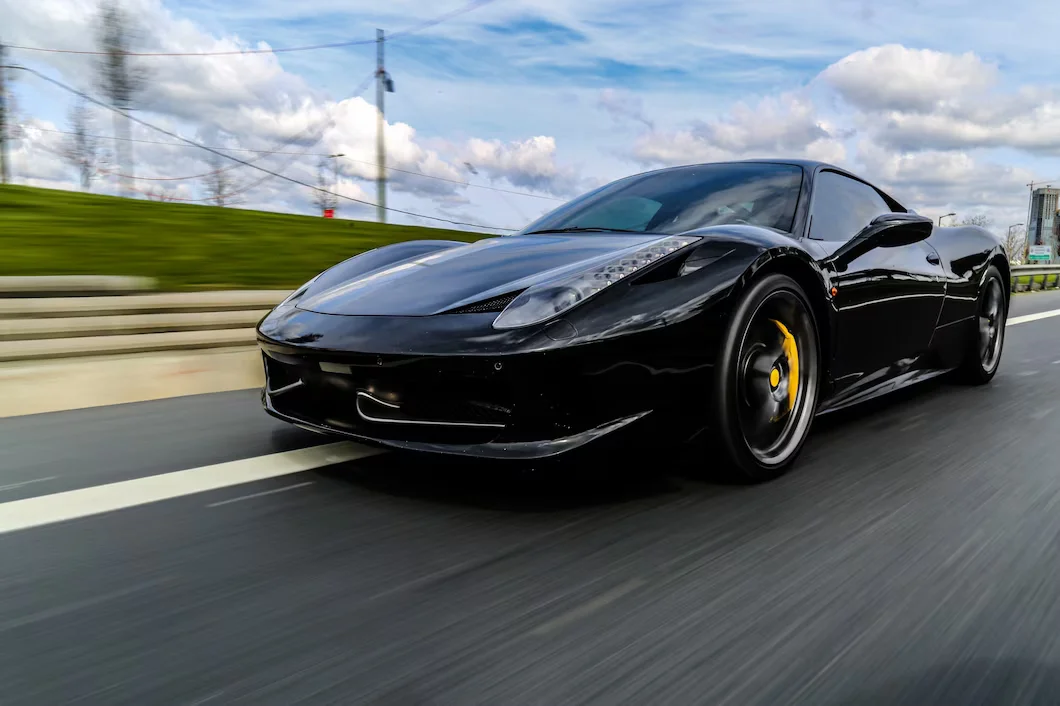
Wheels that are light in weight
Replacing heavy stock wheels with lightweight alternatives is one of the most effective ways to save weight. Lightweight alloy or carbon fiber wheels not only improve the look of your vehicle but also reduce unsprung weight. This weight reduction enhances acceleration, braking performance, and general handling, allowing you to effectively use your vehicle’s power.
Interior alterations
Optimizing the car’s interior is an often-overlooked part of weight loss. Remove unneeded objects that increase weight but have no practical purpose in your everyday driving routine. To save weight, rear seats, spare tyres, and useless storage compartments can be safely removed. However, keep in mind that important components must be retained for safety and regulatory compliance.
Lightweight Body Panels
Replacing heavy body panels with lightweight alternatives, such as carbon fiber or fiberglass, is a proven method to reduce overall vehicle weight. Carbon fiber panels, renowned for their high strength-to-weight ratio, can be used to replace hoods, fenders, and even doors. Not only do these lightweight panels reduce weight, but they also contribute to improved aerodynamics, leading to enhanced performance and fuel efficiency.
Exhaust System Upgrade
Upgrading the exhaust system can provide a dual benefit of weight reduction and improved performance. Replacing the stock exhaust with a lighter aftermarket system, crafted from materials like titanium or stainless steel, not only reduces weight but also enhances exhaust flow, allowing the engine to breathe more efficiently. This results in increased horsepower and a more exhilarating driving experience.
Lightweight Seats
Another area where weight reduction can make a significant impact is the seating. Replacing heavy stock seats with lightweight racing seats or carbon fibre shells can substantially reduce weight. These seats not only provide comfort and support during spirited driving but also contribute to improved weight distribution and overall performance.
Performance Brakes
While not directly reducing weight, upgrading to performance brakes can improve overall performance by reducing unsprung weight. High-performance brake systems often feature lightweight calipers and rotors, resulting in improved stopping power and enhanced brake feel. Additionally, they dissipate heat more effectively, reducing the risk of brake fades during aggressive driving.
Weight loss is an important aspect of improving car performance, and the strategies mentioned above can help you realize your vehicle’s full potential. You can lose weight and increase acceleration, handling, and fuel efficiency by choosing lightweight wheels, making interior modifications, changing body panels, updating the exhaust system, selecting lightweight seats, and contemplating performance brakes. However, always use caution and make sure that any alterations are done properly and in accordance with local rules. Accept the weight-loss path and enjoy a new level of driving exhilaration.
#6 Transmission and Differential – Unleashing the Power within Your Drivetrain
The gearbox and differential are critical components of your vehicle’s drivetrain, transferring power from the engine to the wheels. Optimizing these systems can improve your car’s performance and driving pleasure dramatically. In this section, we will look at essential features of the gearbox and differential modifications, offering unique insights in an easy-to-read format.
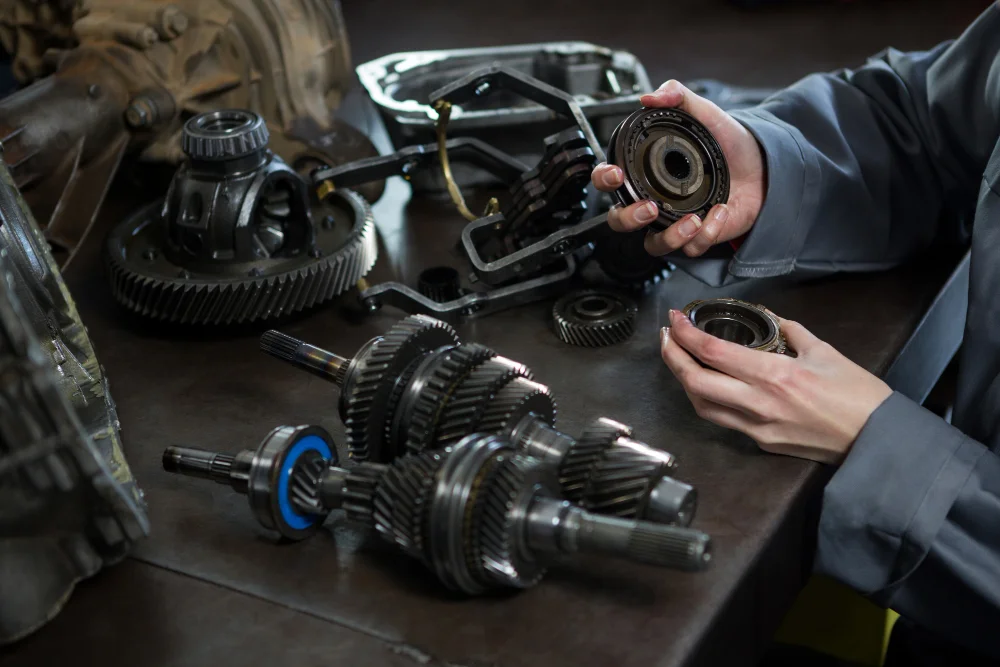
A Smooth Operator: Performance Gearbox Fluid
Upgrading to a high-quality synthetic gearbox fluid is one way to increase gearbox performance. This fluid decreases friction and heat buildup, resulting in smoother gear shifts and higher transmission efficiency overall. With less internal resistance, power is delivered more efficiently from the engine to the wheels, improving acceleration and responsiveness.
Shifter with a Short Throw: Quicker Gear Changes at Your Fingertips
Installing a short-throw shifter on a manual transmission is a game-changer. This adjustment shortens the distance and effort necessary to shift gears, enabling faster and more precise gear changes. With shorter throws, you may move through the gears more quickly, maximizing acceleration and control during aggressive driving.
The LSD (Limited Slip Differential) – Taming the Twist
Upgrading to a limited-slip differential can improve traction and handling dramatically. Unlike an open differential, which sends power to the wheel with the least resistance, an LSD distributes torque uniformly to both wheels, minimizing wheel spin, and increasing grip. This means enhanced grip during acceleration and cornering stability, letting you fully utilize your vehicle’s power without sacrificing control.
Remember that altering the gearbox and differential requires significant thought and competence. To ensure compatibility and optimal results, choose reputed manufacturers and consult professionals experienced with your specific car make and model.
Incorporating these enhancements into your car’s drivetrain can unlock its full potential, providing smoother gear changes, improved traction, and enhanced overall performance. Upgrade your transmission fluid, install a short-throw shifter, or fit an LSD to improve your driving experience, whether you’re a track aficionado or simply love spirited driving.
Stay tuned as we continue to investigate more aspects of automotive performance optimization, providing you with unique insights and practical advice on how to maximize the performance of your favorite vehicle.
#7 Engine Cooling – Keeping Your Performance Engine in the Sweet Spot
Engine cooling is important for maintaining maximum efficiency and avoiding overheating, especially when pushing your vehicle to its limits. In this section, we will look at several areas of engine cooling and offer advice on how to keep your engine in the sweet spot, offering consistent power and reliability. Let’s delve into the subject of automotive cooling and uncover the major tactics for improving your car’s performance, from radiator modifications to cooling system maintenance.
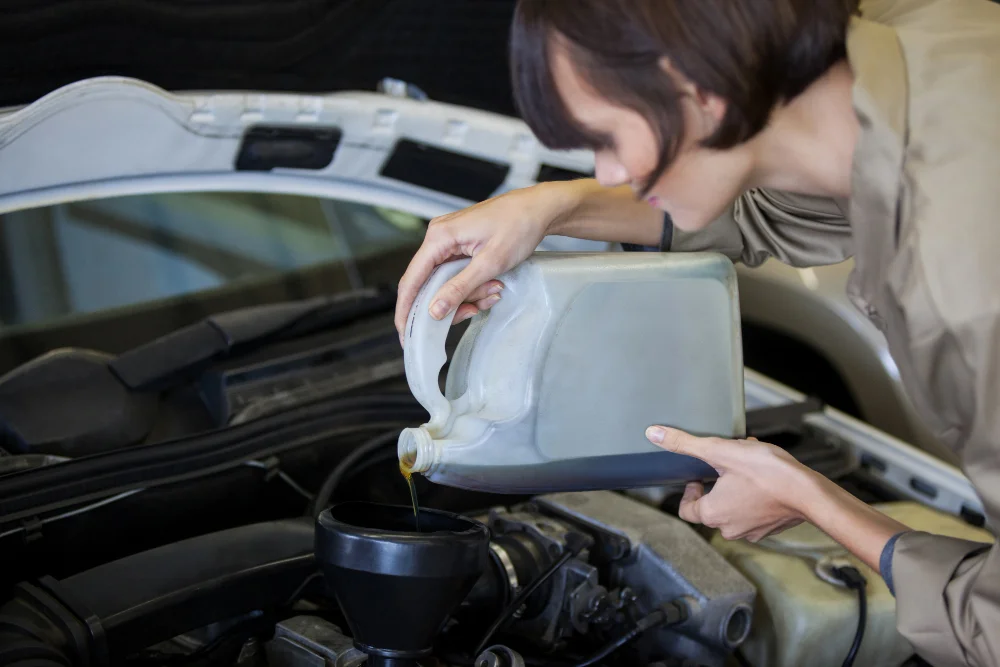
Radiator Improvements
The radiator is an important part of your car’s cooling system since it dissipates heat generated by the engine. Upgrading to a high-performance radiator can boost cooling efficiency dramatically, ensuring that the engine runs at the ideal temperature range. For improved cooling performance, look for radiators with larger core sizes, increased coolant capacity, and improved heat transfer capabilities.
Fans of Excellence
Cooling fans are essential for ensuring optimum airflow through the radiator. Upgrading to high-performance electric fans can provide more cooling airflow, especially in difficult driving circumstances or at higher speeds. Look for fans with higher RPM (rotations per minute), bigger CFM (cubic feet per minute) airflow ratings, and efficient motor designs for increased cooling efficiency.
Coolant Enhancers
Coolant additives can improve the performance of the cooling system and give additional protection against overheating. Thermal enhancers and corrosion inhibitors, for example, can improve heat transfer, lower operating temperatures, and prevent coolant system corrosion. It is critical to follow the manufacturer’s recommendations and use additives that are compatible with the coolant type in your vehicle.
Thermostat Upgrade
The thermostat regulates the flow of coolant within the engine, maintaining appropriate operating temperatures. Upgrading to a performance thermostat with a lower opening temperature can assist the engine in reaching the required operating temperature faster, therefore enhancing overall performance. To ensure optimal cooling system operation, choose a thermostat that is appropriate for your vehicle’s specs.
Maintenance of the cooling system on a regular basis
The durability and efficiency of your vehicle’s cooling system are dependent on proper maintenance. Consider the following maintenance practices:
- Inspect the cooling system on a regular basis for leaks, damaged hoses, and worn belts.
- To prevent coolant degradation and deposits, flush and replenish the coolant at the manufacturer’s suggested intervals.
- Keep the radiator and its surroundings clean and clear of debris, as blockages can impair airflow and cooling performance.
- Check and, if necessary, replace the radiator cap, as a faulty cap can cause coolant leakage and lower system pressure.
Monitoring System Gauges
Monitoring your vehicle’s temperature gauges is essential for early detection of any cooling system issues. Familiarize yourself with your car’s normal temperature range and pay attention to any sudden or sustained temperature spikes. If you notice abnormalities, such as overheating or fluctuating temperatures, promptly investigate and address the issue to prevent potential damage to the engine.
Maintaining appropriate engine cooling is critical for improving vehicle performance and avoiding costly engine damage. You may guarantee that your engine operates within the recommended operating temperature range by applying measures such as radiator modifications, high-performance fans, coolant additives, thermostat upgrades, regular maintenance, and diligent temperature monitoring. Remember to study your owner’s handbook and, if necessary, seek professional assistance. With a well-maintained and properly cooled engine, you’ll be able to unlock your vehicle’s full potential while enjoying a dependable and enjoyable driving experience.
#8 Regular Maintenance – Preserving Performance and Prolonging the Thrill
Maintaining your car’s performance isn’t just about making upgrades and modifications; it’s also about taking care of the fundamentals. Regular maintenance plays a vital role in preserving your vehicle’s performance, ensuring optimal functionality, and prolonging its lifespan. In this section, we will highlight the importance of regular maintenance tasks and provide valuable insights into how they contribute to your car’s overall performance. By following these guidelines, you can keep your vehicle in top shape and continue to enjoy the exhilarating experience it offers.
Also, Read:
Car Maintenance: What You Need to Know
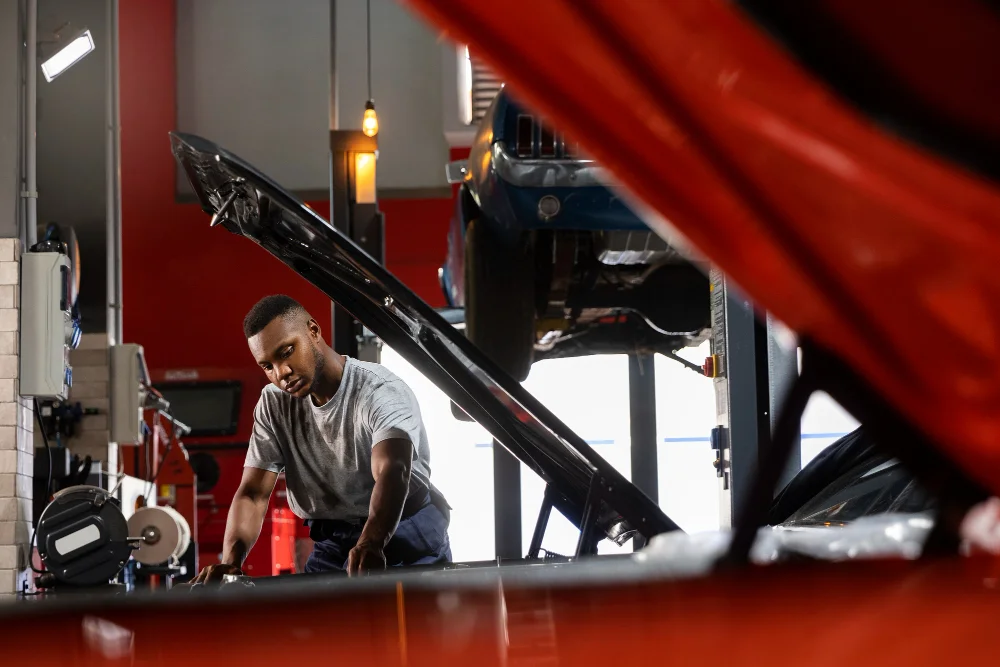
Fluid Changes
Regularly changing fluids is crucial to keep your car running smoothly and optimize its performance. Here are key fluid maintenance tasks:
Engine Oil – Engine oil lubricates the engine components and reduces friction. Regularly changing the engine oil, as per the manufacturer’s recommendations, ensures proper lubrication, optimal engine performance, and improved fuel efficiency.
Transmission Fluid – Transmission fluid cools, cleans, and lubricates the transmission system. It is essential to follow the manufacturer’s guidelines for changing the transmission fluid to maintain smooth gear shifts and prevent transmission-related issues.
Differential Fluid – The differential distributes power to the wheels. Changing the differential fluid at recommended intervals helps maintain proper lubrication, reducing wear and tear and maximizing performance.
Brake Fluid – Brake fluid transfers the force from the brake pedal to the braking system. Regularly flushing and replacing the brake fluid ensures efficient braking performance and prevents brake fade.
Air Filter and Spark Plug Replacement
Air Filter – The air filter prevents dirt, debris, and contaminants from entering the engine. Regularly inspecting and replacing a clogged or dirty air filter ensures proper airflow, optimal combustion, and improved engine performance.
Spark Plugs – Spark plugs ignite the air-fuel mixture in the combustion chamber. Over time, spark plugs can become worn or fouled, leading to reduced performance and fuel efficiency. Regularly inspecting and replacing spark plugs helps maintain efficient combustion and maximizes power output.
Tire Maintenance
Proper tire maintenance is crucial for performance, safety, and handling. Follow these guidelines:
Tire Pressure – Maintaining the correct tire pressure is vital for optimal grip, handling, and fuel efficiency. Regularly check tire pressure and inflate or deflate as per the manufacturer’s recommendations.
Tire Rotation – Rotating the tires at recommended intervals promotes even tire wear, prolongs tire life, and ensures consistent performance.
Alignment and Balancing – Regular wheel alignment and balancing help maintain proper vehicle stability, steering response, and tire wear, improving overall performance and safety.
Battery Care Instructions
Battery Life – Check that the battery terminals are clean and corrosion-free. Inspect the batteries on a regular basis for symptoms of corrosion or degeneration. A properly functioning battery enables optimal electrical system operation and dependable engine start-up.
Battery Testing – Test the voltage and charging system of the battery on a regular basis to discover any potential problems. A fully charged and operational battery improves the performance of electrical components.
Hoses and belts
It is critical to inspect belts and hoses on a regular basis for wear, cracks, and leaks. Replace any worn or damaged belts and hoses to avoid engine overheating, loss of power steering, and other performance issues.
A high-performing car is built on regular maintenance. You can maintain your car’s performance, avoid significant problems, and guarantee an exciting driving experience by adhering to a thorough maintenance routine that includes fluid changes, air filter and spark plug replacements, tyre maintenance, battery care, and inspections of belts and hoses. Always review your owner’s manual and follow the manufacturer’s recommendations for particular maintenance intervals. Accept regular maintenance as a habit, and your car will thank you.


